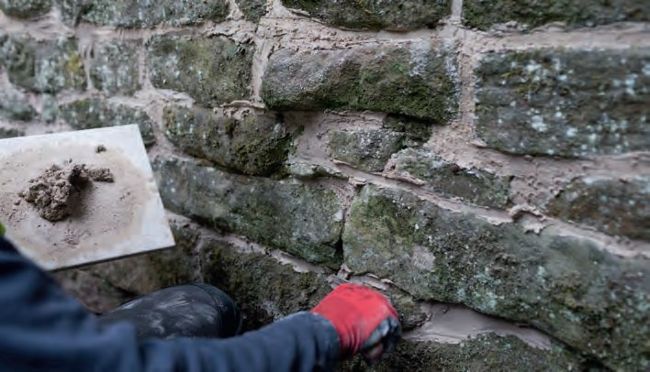Repointing old walls
Is it time to repoint your period home’s brick or stone walls? Alan Tierney reveals how to spot the signs of failing mortar and what you need to know to get the job done right
Alan Tierney

This stone wall is being repointed by a SPAB member using a nonhydraulic hot mixed lime mortar of local quick lime and quarried sand
SPAB / RALPH HODGSON
Masonry walls are built of a series of individual units – generally brick, stone or flint – with mortar acting as the glue that holds them together. The external face of the finished wall therefore consists of masonry units separated by mortar joints. These joints are known as pointing.
Mortar basically comprises an aggregate (sand) held in a matrix by a binder. In old walls the latter ingredient was usually lime, but might be earth or a combination of the two. Stone walls were often built with earth-lime mortar, for example, but pointed using lime.
How pointing works
The most obvious purpose of pointing is to fill the gaps between the masonry units. This stops them from becoming loose and prevents water, draughts and foreign material such as dirt and vegetation from penetrating the wall.
Even more crucial is pointing’s role in managing moisture in the wall fabric. Old bricks are soft and permeable, while stone varies greatly from soft sandstones to very hard flint – but is generally relatively soft and permeable.
These materials absorb water readily; becoming wet when it rains and then drying through evaporation. The lime mortar pointing is also soft and permeable, which helps to ensure that this cycle of absorption and evaporation can continue to take place over the whole wall surface.